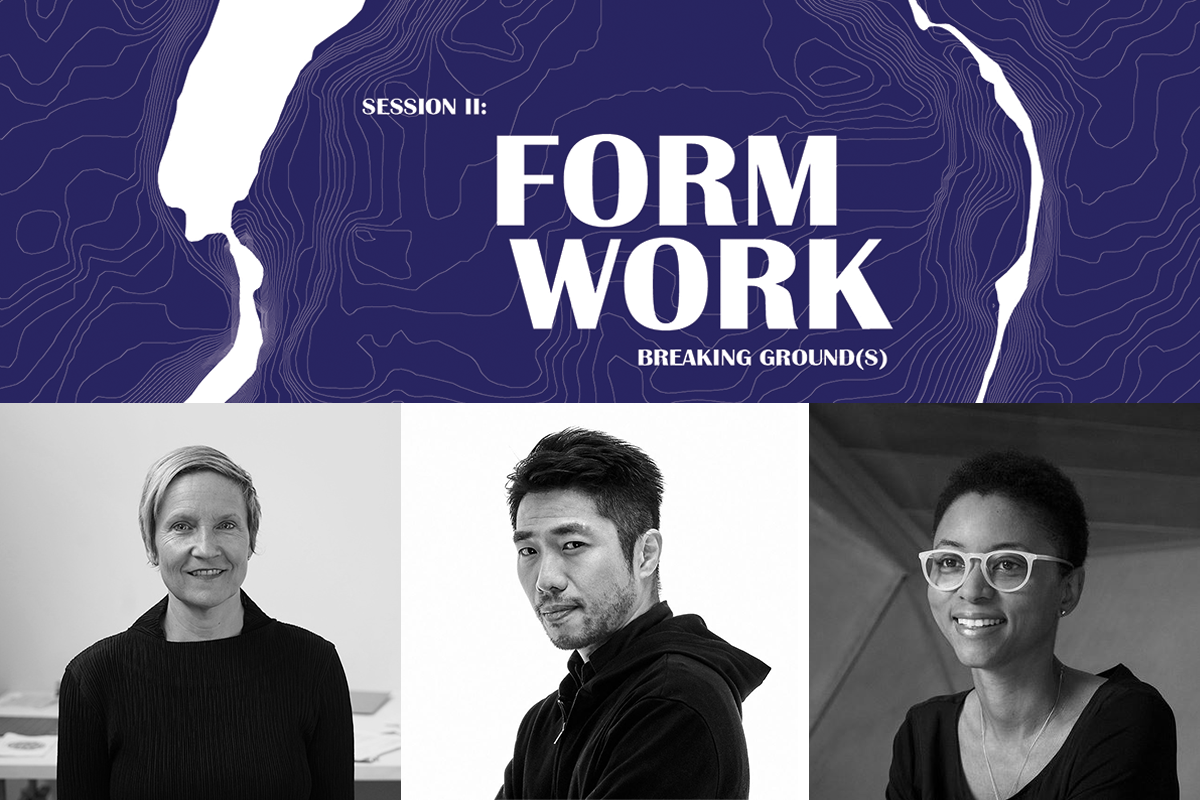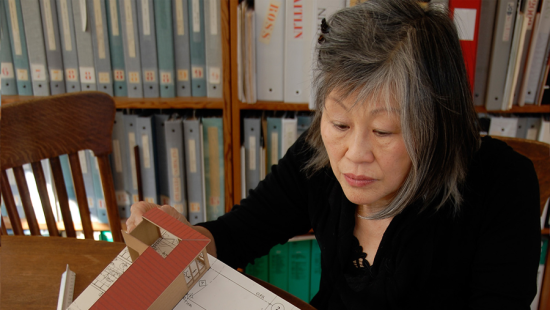FORMWORK Forges Diversity and Sustainability in Design
The second session of the Breaking Ground(s) symposium, titled "FORMWORK," features three architects whose work brings diverse perspectives and social commitments to the practice of design and pedagogy.
 Portraits from left: Lori Brown, Arthur Huang, and Nina Cooke John. images / provided
Portraits from left: Lori Brown, Arthur Huang, and Nina Cooke John. images / provided
"FORMWORK," the second session of this spring's Preston Thomas Memorial Symposium, will feature presentations by Lori Brown, Nina Cooke John (B.Arch.'95), and Arthur Huang (B.Arch. '02). The speakers will discuss the generative relationship between design practice and pedagogy, diversity in the discipline, and the work of endowing future generations of designers with the tools and questions they will need to face pressing challenges. Following their lectures, Cornell AAP architecture faculty Lily Chi and Marta H. Wisniewska will moderate a discussion that delves deeper into interconnections across these themes.
Lori Brown, FAIA, is a professor and director of diversity, equity, and inclusion at the School of Architecture at Syracuse University, and co-founder of ArchiteXX, a gender equity in architecture organization transforming the profession by bridging the academy and design practice in New York City. The organization seeks to raise awareness of women in architecture, create support and mentoring networks, and take design actions that broaden the discourse and architecture discipline in the world. Brown's lecture will consider how "diversity in the discipline can transform the discipline," with a focus on gender equity. Brown explains, "As the discipline more substantially diversifies, and more voices and lived experiences have greater resonance, the type of work we do and who architects work with will also change. Architects have such broad abilities as spatial thinkers, and these skills must be put to greater use for the benefit of society at large. The problems the world faces demand this of our discipline." Drawing on her collaborative projects with ArchiteXX, as well as her work as a researcher and educator, she will discuss new initiatives for building diverse leadership, and asserting agency in spatial expertise. "There must be substantive change in what we value in leaders, as the future will be so much different than the past, given all we are confronting." Brown argues that the qualities and characteristics of leadership itself will change as it becomes more inclusive — and that this change is necessary.
Following Brown's presentation, Nina Cooke John will discuss the evolution of her professional practice and share selected projects that center design and pedagogy in urban placemaking. Cooke John is the founding principal of Studio Cooke John Architecture and Design, a multi-disciplinary design studio that values placemaking as a way to transform relationships between people and the built environment. She is also an adjunct assistant professor at Columbia University Graduate School of Architecture, Planning, and Preservation. In reflecting on the mutually transformative dynamic between design practice and pedagogy, Cooke John relates, "My work on the Harriet Tubman Monument inspires the current studio I'm teaching at Columbia. The challenge is to engage issues of fugitivity and memory through research on the Underground Railroad and the New Sanctuary Movement — the common thread between the past and the present being exploitative labor practices in agriculture. The students will design spaces of memory and sanctuary on the archaeological site of a small, free Black community in Hyde Park in the Hudson Valley. There aren't enough built spaces that make visible the full spectrum of history. In designing spaces that acknowledge that we have always been here, we create that sense of belonging that I'm trying to promote in public architecture." As Cooke John emphasizes community-building and civic engagement through formal and spatial design, she notes the power this has to change institutional priorities. "For a long time, I've felt that the message from architecture institutions has been: you can either do formally engaging work or socially conscious work, but not both. I hope students realize that this isn't true. All that we learn about form, space, and order can and should be applied to explorations in how we engage those at the margins and center them in our designs."
Rounding out the discussion, Arthur Huang will share insights from his work at the forefront of regenerative design technology. Huang is the founder and CEO of MINIWIZ, which specializes in transforming waste into sustainable building materials. He will discuss how, over time, the practice has grown from a focus on lab-based experimentation and prototyping, to creating and contracting modular infrastructure — which manufacturing companies can use in-house to reduce and transform waste. "For me, the 'zero-waste' concept began at Cornell and Rome back in 1999, when I was investigating the necessity of using local material to create high-performance architecture that addressed local environmental challenges. As I researched readily available local material to use as building blocks for green building projects, I realized that single-use, industrial, and fashion waste is ubiquitous — and the scale of the issue is enormous. The more I researched, the angrier I became. As a professional, my scope of work expanded tremendously, from conceptual design to what design can be used for." Encountering these seemingly intractable problems has motivated Huang to engineer new possibilities for responsible material stewardship, envisioning a future where circular economies are the norm.
"FORMWORK" offers an opportunity for Huang, Cooke John, and Brown to consider and share the innovations of their practices at pivotal, mid-career moments. Each has forged a unique pathway that leads them to different frontiers of disciplinary transformation. While the importance of diversity within academic institutions has been recognized— who is in the room, who gets to speak, who is in a position of leadership — this perspective has also been critiqued for the way it flattens and instrumentalizes 'identity,' overlooking the lived complexities of intersectionality while maintaining the status quo. As a counterpoint to this approach, each participant's practice shows why diversity, accessibility, inclusivity, and change are both integral and imperative to the discipline. And they show how differently situated knowledges and social commitments produce new sensibilities, ideas of form, and priorities of design.
Please visit AAP's spring 2022 Preston Thomas Memorial Symposium event page for complete and up-to-date information. Go here for AAP's full Art and Architecture anniversary programming.
Stay connected! Follow @cornellaap on instagram, facebook, twitter, and linkedIn; and subscribe to our AAP bi-weekly newsletter.






